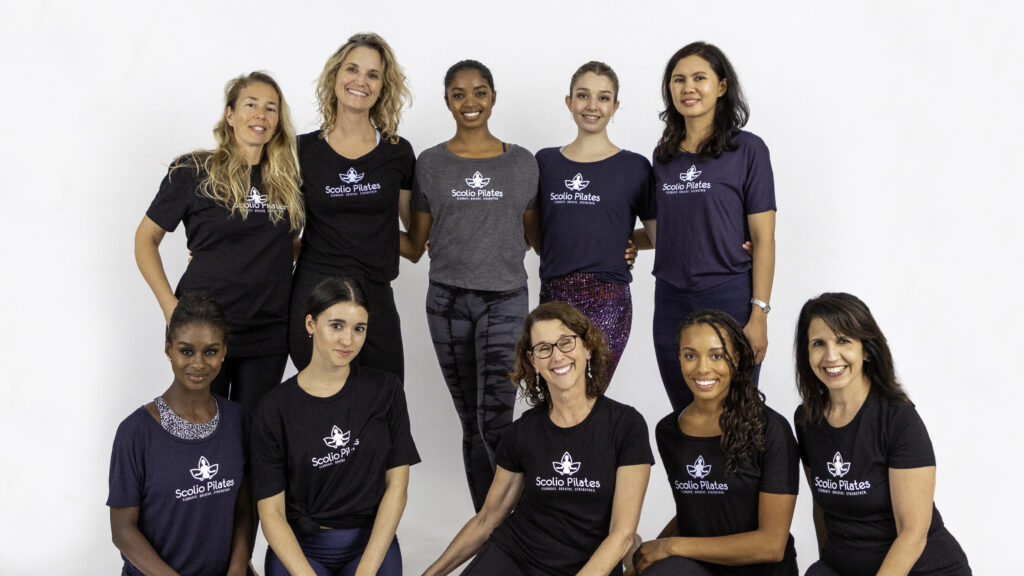Issue #349- Wednesday, October 20, 2021
In Defense of the Diaphragm
by Karena Thek
So, Brett, you say that focusing on the breath changes how we breathe automatically, sometimes not for the better. Agreed.
You also said that focusing on breathing techniques can bring tension to the thoracic, shoulder girdle, and cervical. Yes. They sure can.
And Brett, you demonstrated that having your clients mimic good patterns is the way to go for your clients? I love that.
But… and… (insert conjunction of choice so as not to offend), Brett, you contradicted yourself. Because you did bring a focus to the breath, you demonstrated proper form and your clients mirrored proper form – all without saying a word about breathing. Kudos, kudos, kudos.
Brett, you wrote: I have found that an effective way to teach new ways of working is for me to do an exercise while the student places his hands on me…. This often helps the student to recognize a similar tension pattern in his own body… Etvoila! The breathing parts function more as they should, and the student is breathing more rhythmically and calmly, all in a sustainable manner.
And here’s where our agreement ends. [cue the Harpy]
“The brain exercises the greatest power in human-kind – but the air supplies sense to it.”
–Hippocrates, 500 BC
The diaphragm is so good at breathing that it’s easy to forget it’s a muscle, not to mention a major stabilizer of the spine. Therefore, a weak diaphragm will equal: weak spine, weak core, imbalance, poor coordination, poor organization of movement, painful neck and shoulders, and even pelvic floor dysfunction, to name a few.
We all routinely train the muscles of the core and the extremities. Sometimes you see hypertrophy, increased stability or proprioception. The same happens when you train the diaphragm – it hypertrophies and adds more stability to our movements. Valuable attributes when you are working to improve health! Most importantly? It is happening from the inside-out. This is not a superficial change, but a dramatic change from the literal center of the thorax.
The magical circular diaphragm.
The really cool thing about the diaphragm? It’s more or less a circle. And when it contracts (on inhale), it pushes the ribs away from your center. If you hold your breath for a pause, you can feel how those contracted muscles act like internal struts that connect your ribs to your center — or your outer surfaces to your inner surfaces of the great space of the thorax. When those fibers are contracted and pushing out against the ribs, I always think about the rigid-appearing gills of a stonefish – bursting out like barbs for protection (see image). This is strength! This is stability!
However, the diaphragmatic circle of stability is diminished by almost any non-perfect alignment. Kyphosis? The diaphragm contracts posteriorly, and the back ribs expand. Military Stance? The diaphragm contracts anteriorly, and the front ribs expand. Scoliosis? Then the diaphragm expands into the convexities. Essentially the diaphragm will move where there is room. These fibers will strengthen, the other will weaken, creating a vicious cycle that will eventually lead to decompensation – a mighty step past compensation.

Do we really need a breathing technique, then?
If you can use Brett’s technique above of demonstrating perfect breathing and it works, Woohoo! You’re done! That could easily be Step One for breathing techniques. If you have someone who has a more significant pattern of poor breathing that doesn’t change with mirroring, then we need to bring attention to this very important muscle.
Step Two: Move your client as close to neutral as possible, as I’m sure you already do. This gives the diaphragm room to act in a more physiologically normal way. However, it may not just automatically change a decades-old pattern.
Step Three: If you notice that the diaphragm is set in a pattern that isn’t changing with mirroring or re-positiong towards neutral, then I encourage you to pull out your breathing techniques to encourage a different pattern. Find a way to strengthen the diaphragm without inducing poor breathing habits. My favorite direction for a beginning student is this:
- Awareness. Please become aware of the next inhale. Don’t make it a big inhale just notice when you do inhale.
- Slow exhale. Follow that very natural inhale up with a very long, slow exhale.
- Inhale for Free. Next, when you feel you must, inhale. But don’t try to inhale. Your body knows how to do this, so just let it happen. Stop working and let your body’s wisdom work.
- Slow exhale.
- Inhale for Free. Remember, no work here – no forceful inhale. Your body’s got this!
- Return to regular breathing.

To close, I agree with you, Brett. The wrong focus on the breath creates all sorts of problems – including a breathing pattern disorder. You are also correct that it is challenging to teach breathing correctly. In addition, take a moment to consider the power of the diaphragm and all that it can do to create the changes you and your clients are seeking. Then make that change, from the inside-out.
Stop working superficially. Work to change the strength of the diaphragm, and you are working to change the alignment and well-being of your client, from the inside-out. –Karena Thek
Final note to you, the reader: Thank you for allowing me to banter with Brett. Brett and I are still “convalescing from our childhoods” [Hilma Wolitzer] and greatly appreciate your good humor!

Karena Thek is a Pilates Instructor with a passion for managing pathologies in the Pilates setting as well as disseminating information for those who are ready to change. Her work has led her to author OsteoPilates, Increase Bone Density, Reduce Fracture Risk, Look and Feel Great! (2003) and Scolio-Pilates, Exercise for Scoliosis, A Pro-Active Guide (2011). In addition to her books, she has numerous webinars and free YouTube videos on the topics that she teaches. Karena is the host of a women’s health talk radio show, Alive & Well Radio on AM1220 KHTS. You can listen live from anywhere on the planet at www.hometownstation.com. She previously hosted Pilates for Healthy Bodies on PBS (2009-2011). And when she’s not teaching, writing or thinking about Pilates? You can find her on Facebook and Twitter posting pics of daily adventures with her partner John and their furry little child, Gus T. Basset Hound. Learn more at osteopilates.com

